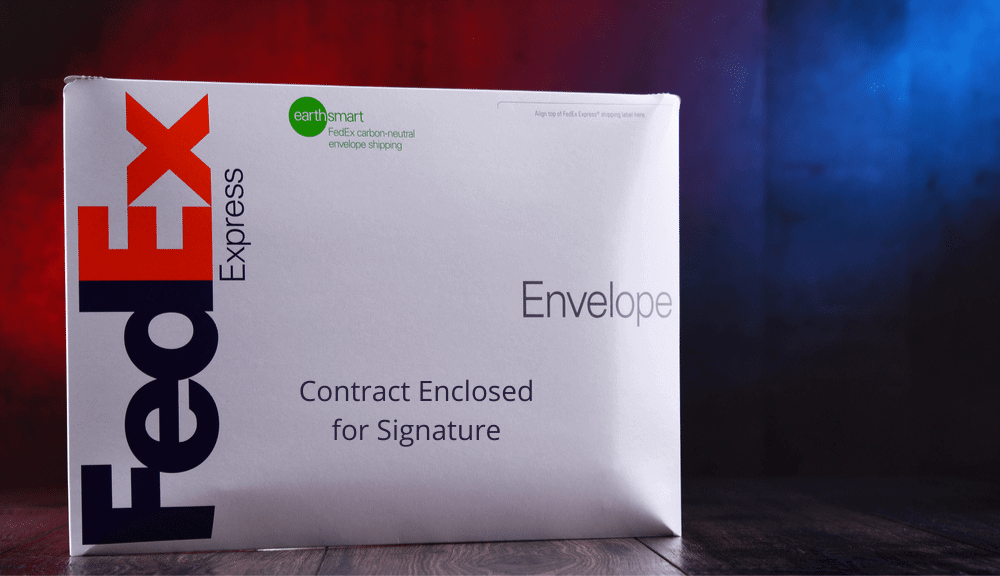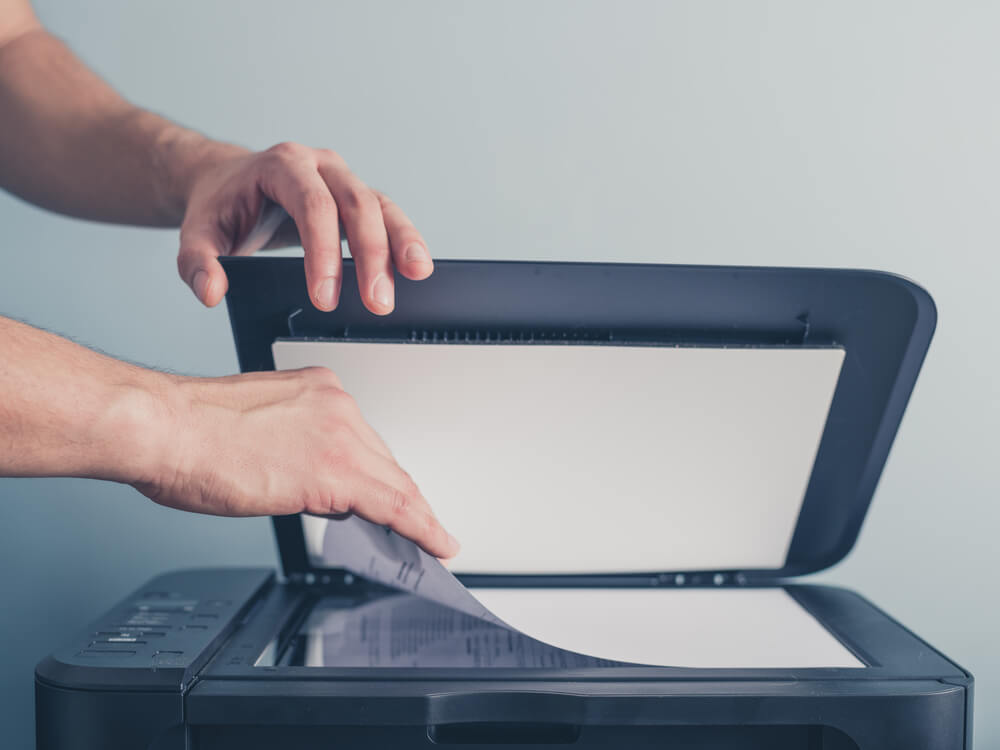The need for obtaining a wet signature on an agreement is not ideal for business transactions. There are other inefficiencies surrounding this traditional method for getting business documents executed.
“Wet”, of course, refers to the fact that a paper document was physically signed with ink. Some fountain pen inks can take 60 or more seconds to dry. Even though ink from a ballpoint pen takes only a few seconds to dry, this is still considered a wet signature.
Adding wet signatures to agreements became standard practice in England after the Statute of Frauds was adopted in 1677 in England. This practice for validating agreements was also adopted in colonial America.
Businesses relied exclusively on on physical signatures for over 300 years. Until Federal Express Corporation (now FedEx) came along in 1971, the process of executing business agreements across distances was notoriously slow. In some cases, the time to turn around respective parties’ wet signatures was the longest part of the sales process.

But even though FedEx sped up the time it took to get a contract in front of a customer or prospect, faster shipping did not address other slow or broken processes such as:
- Ensuring that recipient reviews, signs and returns the document in a timely fashion
- Management of document redlines and revisions
- Properly filing a returned, executed agreement for future internal reference or retrieval
The beginning of the end of wet signatures happened almost 20 years ago.
Debut of the Dry (Electronic) Signature
DocuSign was founded in 2003. Tom Gonser, the then CEO of DocuSign, purchased some of the assets of an earlier startup called DocuTouch, which were owned at the time by NetUpdate, Gonser’s earlier CEO post.
DocuSign began the disruption the wet signature. It became a game changer as far as how documents could be signed.
Competition appeared two years later when EchoSign was founded. Adobe acquired EchoSign in 2011 and rebranded the app, “Adobe Sign.”
Other competitors that sprang up over the years include:
- HelloSign (acquired by DropBox)
- signNow
- Conga Sign – third party native e-signature functionality for Salesforce
- Zoho Sign – Zoho’s proprietary e-signature app
OneSpan includes e-signatures as one step along the “digital customer journey.” Other steps include identity verification, onboarding and the securing of transactions and interactions.
Electronic signature platforms like these are used by sales, HR, procurement, legal and other departments.
On the consumer side, the home mortgage process is now often a combination of wet and dry signatures. This is known as a hybrid e-closing.
Electronic signature apps go well beyond eliminating the need for a wet signature—they provide significant business benefits via their workflow features. One notable benefit is shorter sales cycles.
Example workflow features are:
- Two click document merge to signature request
- Automated reminders to the recipient after X days that a signature is still needed
- Enforcing a business rule that requires multiple signatures
- Automatically attaching of an e-signed document to the signer’s CRM record
Even though e-signature technology has existed for almost two decades, most vendors continue to stress on their websites that the signatures are legally binding. For those who have never originated a document using an electronic signature app, there’s sometimes still a question as to whether an electronic signature is the legal equivalent of a wet signature.
At the U.S. federal level, electronic signatures have, in fact, been legally binding for over 20 years. According to the United States Code, Title 15, Chapter 96, Subchapter I:
(1) a signature, contract, or other record relating to such transaction may not be denied legal effect, validity, or enforceability solely because it is in electronic form; and
(2) a contract relating to such transaction may not be denied legal effect, validity, or enforceability solely because an electronic signature or electronic record was used in its formation.”
Zoho provides a handy country by country legality guide.
Valid Electronic Signature Formats
The form of electronic signature that can be used in digital documents can be any of the following:
- A scanned image of your wet signature
- A version of your signature that you draw on a tablet or other device
- A common font (Arial, Helvetica)
- A signature font

When it comes to using a font for a signature, a lot of people have a personal preference for a handwriting font—even though a common font is exactly the same legally.
Each electronic signature vendor offers their own set of handwriting fonts.
Where The Wet Signature Is Hanging On
In the consumer world, the wet signature is still relatively common. For example, many government agencies do not have residents’ email addresses—so they send documents via the USPS for wet signature.
In the business world, many of us still send and receive standard PDFs as email attachments with a request to sign and then return by email.
While a PDF can be signed electronically using a free app such as Acrobat Reader, sometimes it’s easier to print out the PDF, wet sign it, scan it, and then email the file from the scan back the sender.

When it comes to business transactions, is the wet signature dead? To paraphrase a scene from Monty Python and the Holy Grail, the wet signature is not dead yet. However it is not nearly as common as it used to be—particularly with the acceleration of virtual business dealings beginning in March of 2020.
As businesses continue to adopt an electronic signature platform, wet signatures and scanning will eventually become a thing of the past.


